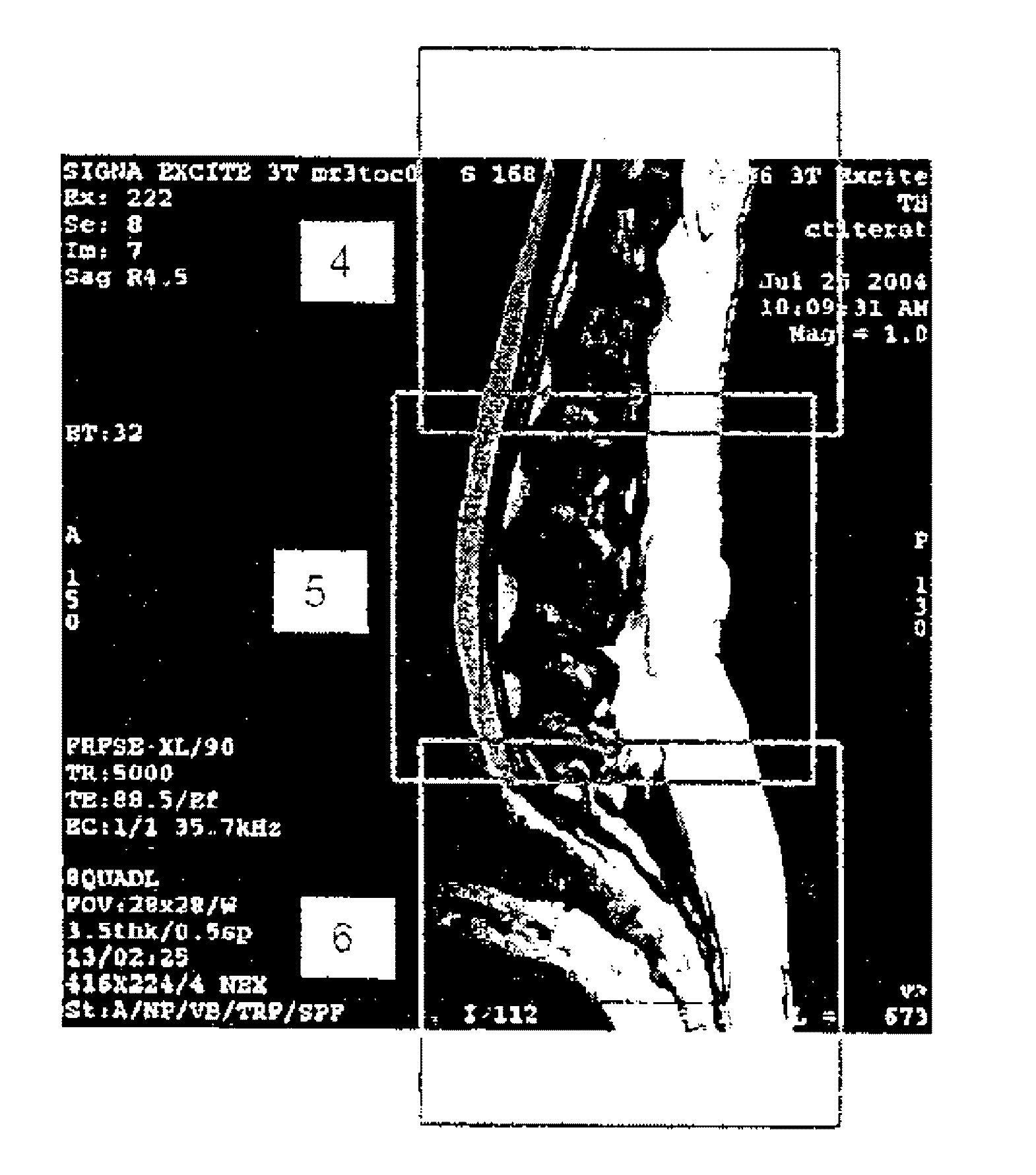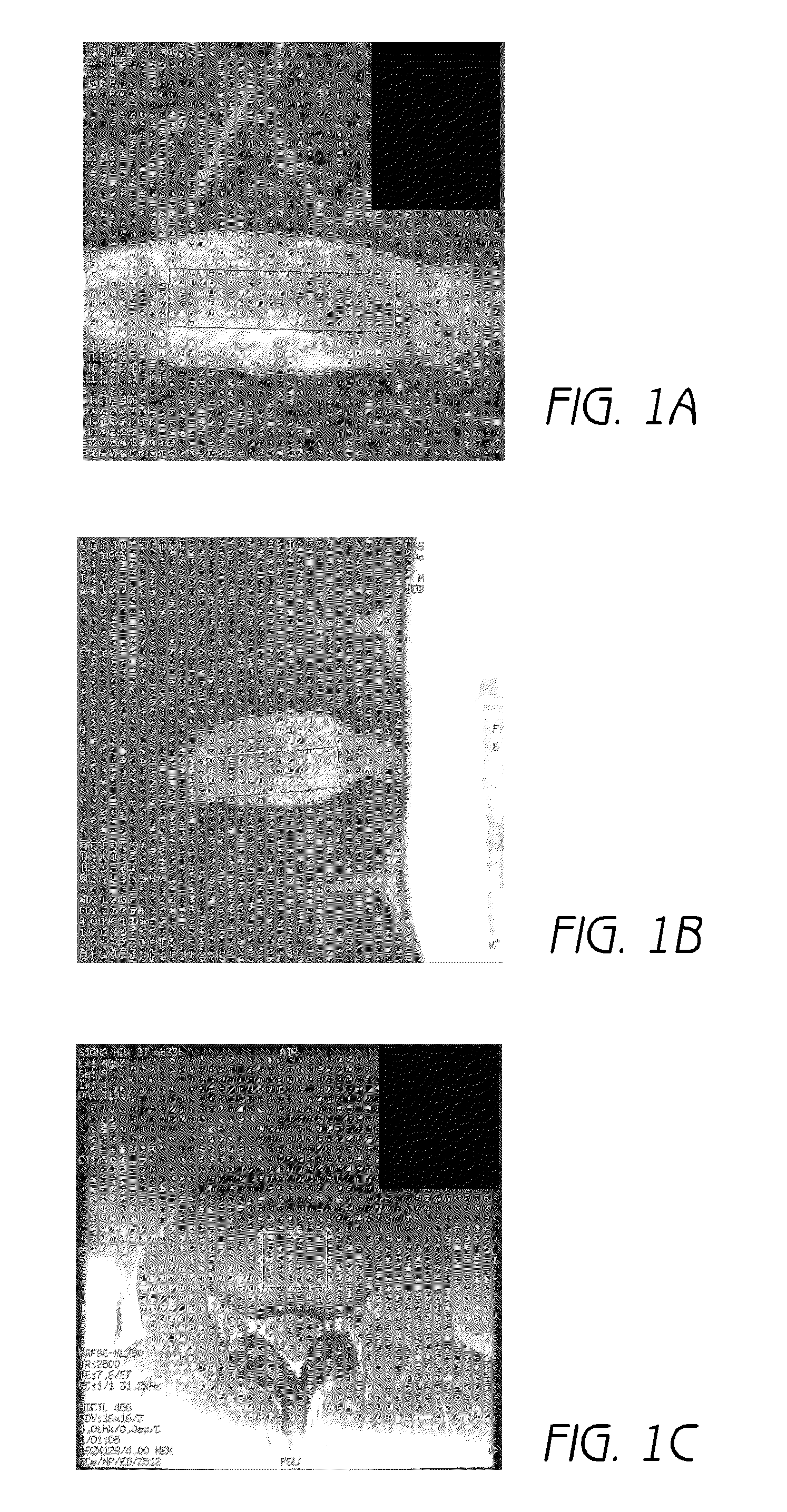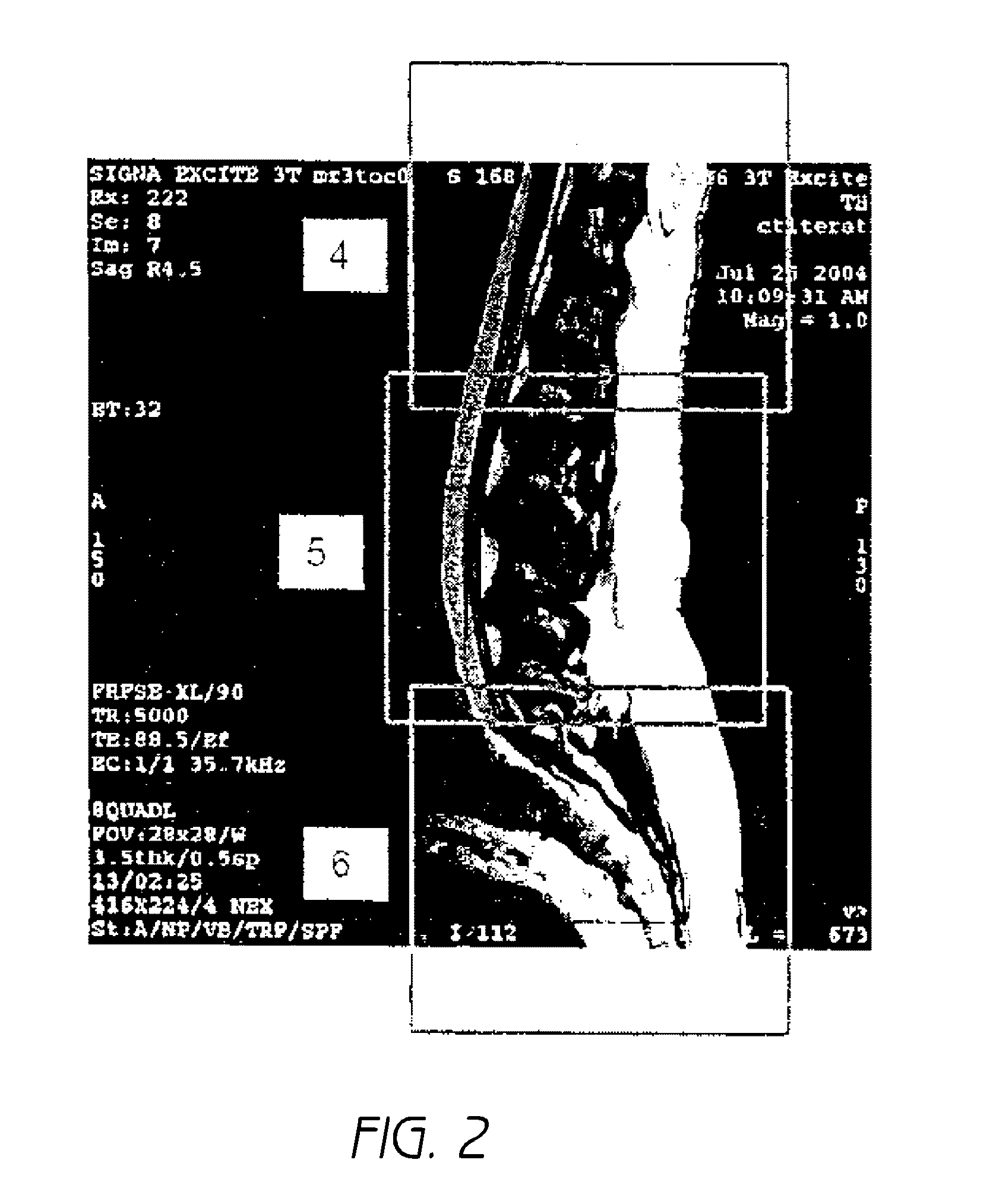Mr spectroscopy system and method for diagnosing painful and non-painful intervertebral discs
a spectroscopy system and disc technology, applied in the field of systems, can solve the problems of inability to distinguish between painful and non-painful discs, relative little has been done to improve the diagnosis of painful discs, and the degree of disc degeneration has not been well correlated to pain,
- Summary
- Abstract
- Description
- Claims
- Application Information
AI Technical Summary
Benefits of technology
Problems solved by technology
Method used
Image
Examples
example 1
[0207]A DDD-MRS pulse sequence & signal processor were constructed to incorporate various aspects of the present embodiments disclosed hereunder and were used and evaluated in clinical experience across a population of discs in chronic, severe low back pain patients and asymptomatic control volunteers. Various data extracted from features of interest along the acquired & processed DDD-MRS acquisition series for discs evaluated in these subjects were compared against control diagnoses for severe disc pain vs. absence severe disc pain, in order to develop & characterize a DDD-MRS diagnostic processor with the highest possible correlation to the control diagnoses.
[0208]Methods:
[0209]Clinical Study Population: The study included 65 discs from 36 total subjects. Thirty-eight discs were from 17 patients with a clinical diagnosis of chronic, severe low back pain (LBP group), and 27 discs were from 19 asymptomatic volunteers (ASY Group). 25 discs in 12 of the LBP patients also received PD (...
PUM
 Login to View More
Login to View More Abstract
Description
Claims
Application Information
 Login to View More
Login to View More - R&D
- Intellectual Property
- Life Sciences
- Materials
- Tech Scout
- Unparalleled Data Quality
- Higher Quality Content
- 60% Fewer Hallucinations
Browse by: Latest US Patents, China's latest patents, Technical Efficacy Thesaurus, Application Domain, Technology Topic, Popular Technical Reports.
© 2025 PatSnap. All rights reserved.Legal|Privacy policy|Modern Slavery Act Transparency Statement|Sitemap|About US| Contact US: help@patsnap.com



